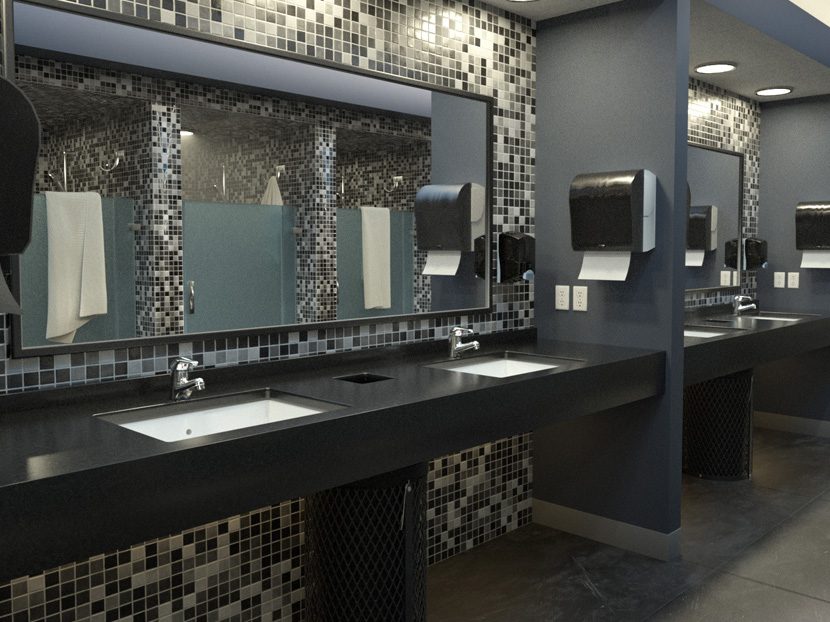Choose and operate restroom plumbing for sustainability

Water conservation is an issue of increasing importance the world over as awareness grows over crippling water shortages. Many areas are using water faster than it can be replenished in water basins and other sources and are facing dire threats to water availability.
The United Nations reports that 4 billion people experience severe water scarcity during at least one month of the year. India’s sixth-largest city, with a population of 10 million, last year was forced to deliver drinking water to its residents via train to help alleviate a critical shortage. And in the U.S., a government-backed study predicted serious water shortages coming in the next half-century.
These threats — coupled with economic concerns and even local legislation mandating water conservation — have led many facilities to adopt a new focus on water use as part of an overall sustainability plan.
Commercial and institutional facilities are the second largest consumer of publicly supplied water in the U.S., according to the EPA. Use varies, but in no type of facility do restrooms account for less than 30 percent of total water consumption, so savings in this part of a building can have a significant impact on the facility’s overall water use.
Here are some tips for boosting sustainability in commercial restrooms, from the design and installation through day-to-day operation.
Start with the low-hanging fruit
The easiest way to cut overall restroom water consumption is simply to require less water every time a sink or toilet is used.
Faucets are perhaps the most cost-effective place to realize immediate water savings. Adding or updating aerators — those easy-to-install and inexpensive devices that restrict water flow — can cut use to 0.5 gallons per minute (gpm) or less, a dramatic reduction from the 2.2 gpm common in non-public settings. Vandal-resistant versions also prevent unauthorized removal and subsequent increased water flow.
Toilets and urinals can also be guilty of unnecessary water guzzling, particularly when these fixtures haven’t been updated in several years. EPA’s WaterSense estimates there are nearly 27 million flushometer-valve toilets currently installed in the U.S. Of those, about 26 percent (7 million) have flush volumes as high as 3.0 to 7.0 gallons per flush (gpf), far higher than the federal standard of 1.6 gpf.
Updating toilets to the new standard, or going further to a 1.28 gpf or 1.1 gpf version, can reduce water consumption significantly. Urinal flush valves that use a pint (0.125 gallons) per flush are also an option for curtailing consumption.
Reduce demand through technology
Modern plumbing technology can reduce water use and environmental impact further, often by taking messy, sometimes thoughtless humans out of the equation.
Switching to electronic sensor faucets can save up to a gallon of tempered water per hand wash by flowing water only when needed — while providing the hands-free experience users prefer.
Sensor faucets also eliminate the potential for users to accidentally or purposefully leave water running. An automatic shut-off feature ensures any malicious efforts to cover or otherwise interfere with sensor operation won’t result in an untended flow of water.
Facilities can extend resource conservation further with hydrogenerators to power sensor faucets and flush valves. These devices employ turbines that harness the flow of water to produce and store energy, eliminating the need for regular battery replacements or electrical wiring.
Audit, monitor, repair
While updated fixtures can make a big difference in water conservation, particularly when their impact is multiplied across larger facilities, knowing how water is being used is an important preliminary step. Before buying and installing a raft of new products, a commercial facility should undertake a water audit to analyze water flow across the facility and determine where efficiencies can be gained with repairs, retrofits or updated equipment.
Leak monitoring is another critical component of a viable water savings plan. Leaks account for more than 6percent of an average facility’s total water use, according to the EPA. For example, a faucet leaking at the rate of one drop per second can send an extra 3,000 gallons of water per year down the drain.
This kind of waste may go undetected if a facility doesn’t regularly monitor for and repair leaks. The good news is that leak repairs are often easy, requiring inexpensive parts and a low investment of valuable maintenance time.
Think holistically
In addition to the day-to-day function and maintenance of restrooms, facilities can boost their sustainability with a more holistic approach to their plumbing.
Choosing quality fixtures, for example, can have a positive impact on both water conservation and overall sustainability by reducing time and money associated with maintenance and also limiting the facility’s overall waste.
Durable, commercial-grade restroom fixtures last substantially longer than lower-quality options, requiring little in the way of repair and replacement. Faucets that don’t stand up to regular wear and tear may need to be replaced frequently, as often every year — leading to lots of faucets being sent to landfills. And high-quality faucets are less likely to develop leaks, helping operations keep water use in check.
There is also increasing awareness that how a product is manufactured should be part of the overall sustainability equation for whatever facility it ends up in. That changing perspective is reflected in LEED and other green building certification programs that incorporate the manufacturing processes of building materials into their assessments.
Selecting restroom fixtures from manufacturers that adopt sustainable manufacturing processes can lighten the building’s footprint beyond the four walls, helping to promote better environmental stewardship throughout the supply chain.




